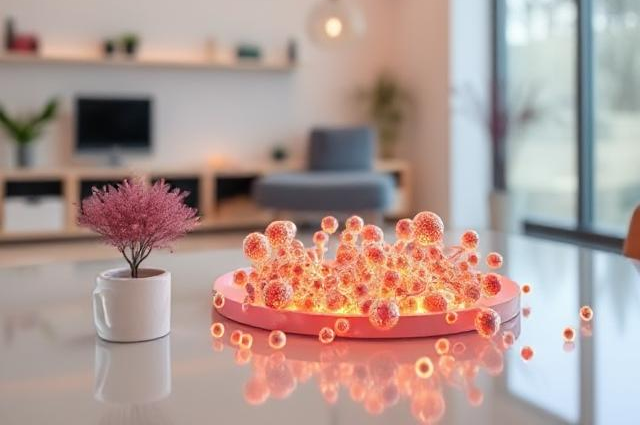Advanced Materials, Nanomaterials, Science and Technology
Nanomaterials in Home Appliances
Nanomaterials have revolutionized various aspects of home applications, offering enhanced functionality, durability, and efficiency. Their unique properties, such as high strength, antimicrobial activity, and superior thermal and electrical conductivity, make them an essential component of modern household products.
One of the most significant uses of nanomaterials in homes is in coatings and surfaces. Self-cleaning windows, for instance, utilize titanium dioxide nanoparticles, which break down dirt and grime when exposed to sunlight, reducing the need for frequent washing. Similarly, antimicrobial coatings containing silver nanoparticles are applied to kitchen surfaces, furniture, and even doorknobs to prevent bacterial and fungal growth, ensuring a cleaner and healthier indoor environment.
Energy efficiency in homes has also benefited greatly from nanotechnology. Nanocoatings and aerogels provide superior insulation, reducing heat loss in winter and keeping interiors cool in summer. Solar panels, an increasingly popular choice for sustainable energy, use nanomaterials to enhance light absorption and efficiency, making renewable energy more accessible and effective for homeowners.
Textile applications are another area where nanotechnology has made a significant impact. Stain-resistant fabrics, treated with water- and oil-repellent nanocoatings, help maintain clean upholstery and clothing with minimal effort. Additionally, antimicrobial nanoparticles are incorporated into textiles such as bedding, curtains, and carpets to prevent bacterial growth and odors, promoting a healthier living space.
Water purification has been greatly improved through nanofiltration systems. Filters made from graphene or carbon nanotubes can effectively remove contaminants, bacteria, and heavy metals from drinking water, ensuring safer consumption. Similarly, antimicrobial nanoparticles in water filters prevent bacterial buildup, extending the lifespan of household filtration systems.
Air quality inside homes has also seen improvements thanks to nanomaterials. High-efficiency particulate air (HEPA) filters integrated with nanofibers capture ultrafine dust, allergens, and pollutants, providing cleaner air for residents. Photocatalytic purifiers, using titanium dioxide-based nanotechnology, can break down volatile organic compounds (VOCs) and airborne bacteria, further enhancing indoor air quality.
In food storage and packaging, nanomaterials play a crucial role in preserving freshness. Antibacterial food containers embedded with silver or zinc oxide nanoparticles help extend shelf life by inhibiting bacterial growth. Additionally, smart packaging solutions using nanotechnology can change color to indicate food spoilage, allowing consumers to monitor freshness more effectively.
Modern electronics and smart devices also benefit from nanomaterials, particularly in displays and battery technology. Transparent and flexible screens enhanced with graphene and quantum dots improve durability and performance in smartphones, tablets, and smart TVs. Meanwhile, nanotechnology is advancing lithium-ion batteries, leading to longer-lasting and more efficient household electronics.
Cleaning solutions have become more effective with the integration of nanomaterials. Nano-enhanced detergents use enzyme-loaded nanoparticles to break down stains more efficiently, reducing water consumption and improving cleaning results. Likewise, self-cleaning tiles and bathroom surfaces coated with hydrophobic and antimicrobial nanomaterials reduce maintenance efforts and keep spaces hygienic.
Even construction materials in homes are now benefiting from nanotechnology. Stronger and more durable concrete is made using silica nanoparticles and carbon nanotubes, enhancing the longevity of buildings. Additionally, fire-resistant coatings based on nanotechnology improve safety by reducing the flammability of household structures.
In conclusion, nanomaterials have transformed home applications by making everyday products smarter, more efficient, and more sustainable. As research continues, their role in creating healthier, safer, and more energy-efficient homes will only expand, improving the quality of life for homeowners worldwide.

